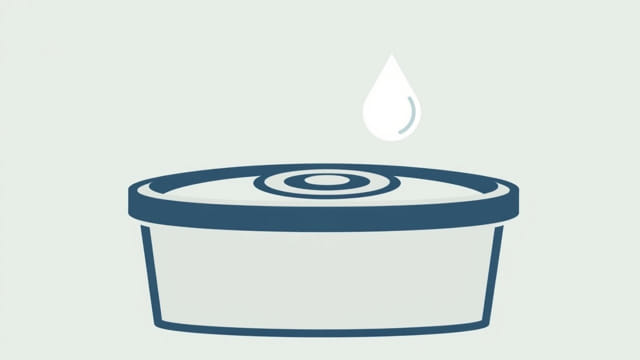Maintaining proper water chemistry in a hot tub is essential not only for the longevity of the tub itself but also for the comfort and safety of those using it. One of the most commonly misunderstood aspects of water balance is alkalinity. When total alkalinity is too high, it can cause cloudy water, scaling on surfaces and equipment, and make pH levels difficult to control. Understanding how to decrease alkalinity in a hot tub effectively will ensure your spa stays in top condition and provides the best experience possible.
Understanding Alkalinity and Its Role in Hot Tubs
What Is Total Alkalinity?
Total alkalinity refers to the amount of alkaline substances in your hot tub water, primarily carbonates and bicarbonates. It acts as a buffer that helps stabilize the pH level, preventing sudden spikes or drops. Alkalinity is measured in parts per million (ppm), and the ideal range for a hot tub is between 80 and 120 ppm.
Why High Alkalinity Is a Problem
When alkalinity exceeds the recommended range, it causes several issues:
- pH lock where the pH becomes resistant to change
- Scale formation white, crusty deposits on the hot tub shell and internal components
- Cloudy water reduced water clarity and aesthetic appeal
- Inefficient sanitizers chlorine or bromine becomes less effective
Managing alkalinity is the first step in keeping your water clear, balanced, and safe.
Testing the Alkalinity Level
Choosing the Right Test Kit
Before you can adjust alkalinity, it’s crucial to test it accurately. Use a reliable water testing method such as:
- Test strips quick and easy to use, suitable for routine checks
- Liquid test kits more accurate, ideal for thorough testing
- Digital testers professional-grade accuracy for serious hot tub owners
How to Interpret Results
After testing, compare the results to the ideal range (80120 ppm). If your test shows a higher reading, you’ll need to take steps to lower the alkalinity while maintaining overall water balance.
How to Decrease Alkalinity in a Hot Tub
Step 1: Use a pH Decreaser (Sodium Bisulfate)
The most effective way to lower alkalinity is by adding a pH decreaser, also known as sodium bisulfate. Although it primarily lowers pH, it also reduces alkalinity. Make sure to follow these instructions carefully:
- Turn off the jets to avoid immediate dispersion
- Measure the required amount based on product instructions and your test results
- Pour the chemical into the deepest part of the hot tub
- Wait for about 30 minutes to 1 hour
- Retest the alkalinity and pH levels
Always add chemicals gradually to avoid dropping the alkalinity too far too fast.
Step 2: Aerate to Raise pH Without Affecting Alkalinity
Once you’ve reduced the alkalinity, the pH level might also drop below the optimal range (7.27.8). To raise the pH without increasing alkalinity, you can aerate the water. This is done by:
- Turning on the air jets
- Running waterfalls or fountains if available
- Letting the hot tub sit uncovered while the jets are on
This encourages the release of carbon dioxide, which naturally raises pH while keeping alkalinity stable.
Step 3: Repeat If Necessary
If the alkalinity is still too high after one treatment, repeat the process over the next few days. Do not try to adjust it all at once, as rapid changes can damage the equipment and affect bathers’ skin and eyes.
Preventing Alkalinity from Rising Again
Monitor Regularly
Test the water at least twice a week and after heavy use. Catching imbalances early will make them easier to correct.
Use Low-Alkaline Fill Water
Sometimes the source water you use to fill your hot tub has high alkalinity. Consider using a pre-filter attachment to your hose to reduce impurities and balance the water before it enters your spa.
Balance After Every Chemical Addition
Every time you add sanitizer, shock treatment, or other chemicals, recheck the water balance. This ensures you don’t unintentionally raise the alkalinity.
Common Mistakes to Avoid
Using Baking Soda to Raise pH
Although baking soda increases alkalinity, it’s not a good option for raising pH alone because it may push your alkalinity too high. Stick with appropriate chemicals like sodium carbonate for that purpose.
Overusing Decreasers
Adding too much sodium bisulfate can crash both alkalinity and pH, leading to corrosion of your hot tub components. Always follow product instructions and retest before reapplying.
Ignoring Aeration
Many hot tub owners forget that pH and alkalinity can be balanced independently by using aeration. This technique is key to managing one without significantly affecting the other.
When to Seek Professional Help
Persistent Imbalances
If your alkalinity levels remain consistently high despite multiple adjustments, it might indicate a deeper water chemistry problem. Contact a pool or spa professional to analyze the issue.
New Users and Large Spas
If you’re new to spa maintenance or have a larger model, a professional may help set a chemical maintenance routine that prevents future issues. They can also recommend automated systems that maintain alkalinity and pH balance automatically.
Lowering the alkalinity in your hot tub is essential for maintaining clean, clear, and balanced water. While it may seem intimidating at first, the process is straightforward when you follow step-by-step instructions, use the right products, and monitor the results closely. Maintaining the correct total alkalinity helps protect your hot tub equipment, enhances the effectiveness of sanitizers, and ensures a more pleasant soaking experience. Regular testing and incremental adjustments will keep your spa water healthy and inviting every time you use it.
